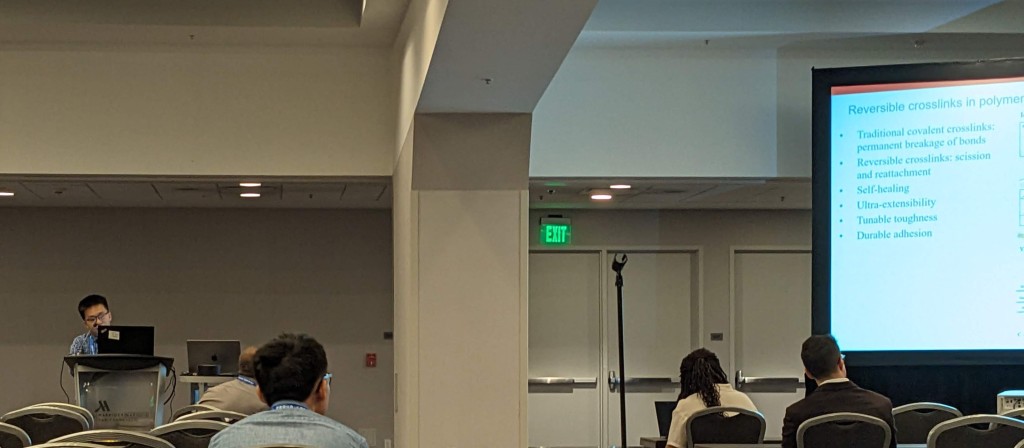Congratulations for PhD candidate Ellen van Wijngaarden for passing her A-exam!
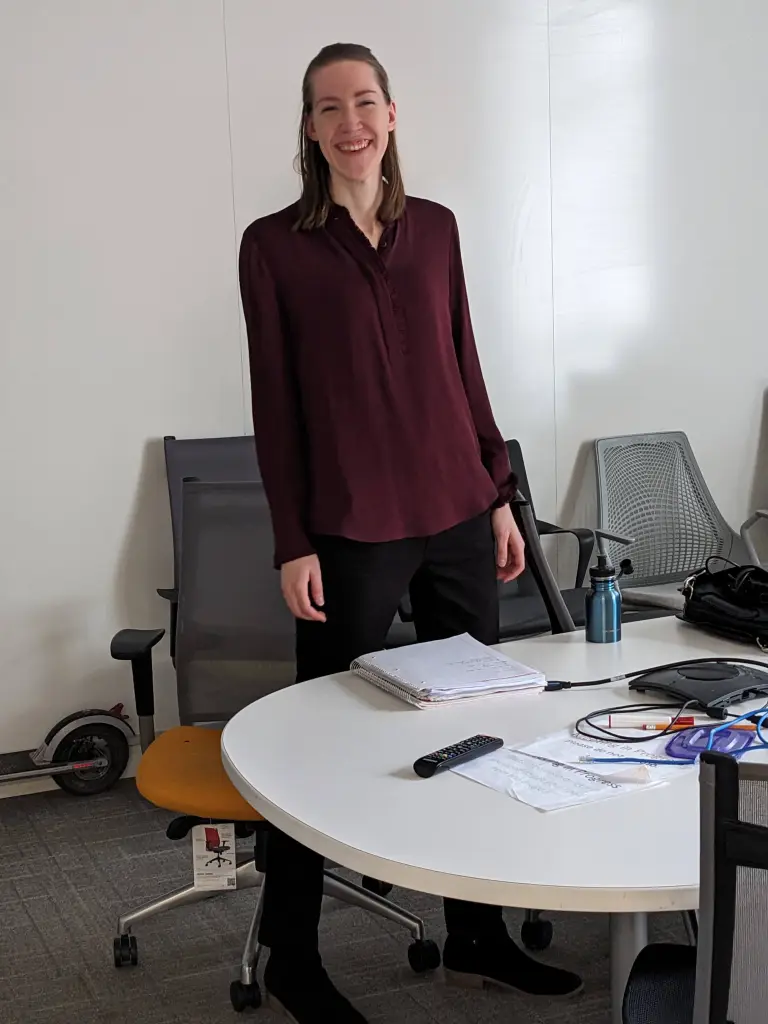
Congratulations to Dr. Robert Wagner, who is starting a tenure track faculty position in the Binghamton University Mechanical Engineering department this week!
And . . . Congratulations to Dr. Steven Yang who started a postdoctoral position with Prof Nikolaos Bouklas at Cornell just before the holidays! Steven defended in the early fall and participated in the December graduate hooding ceremony.
Good luck to both in their new endeavors!
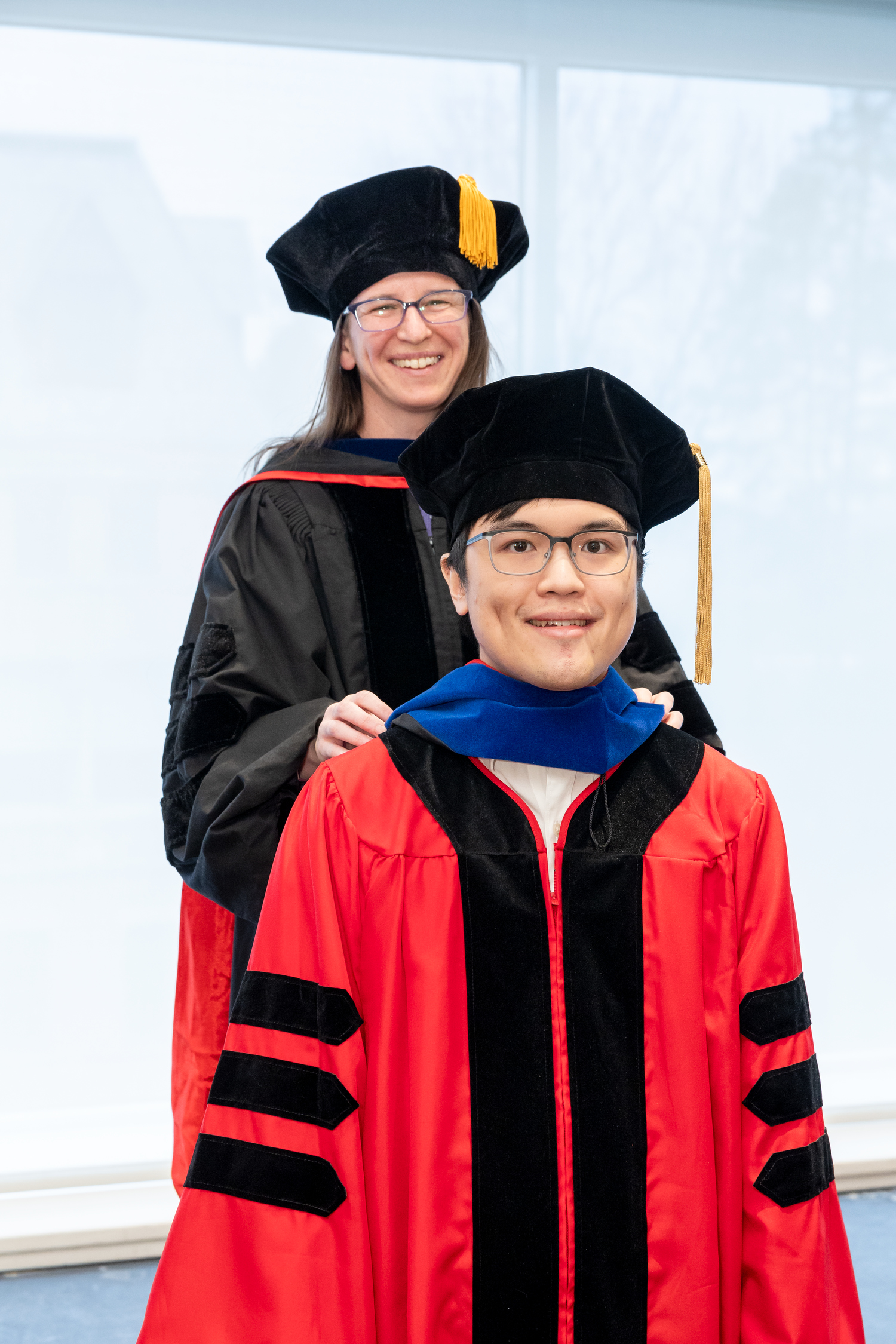
Ionic diodes, created at the intersection of polymers with different fixed charges, form the core of many ionic devices. Despite this centrality, the time dependent behavior of these diodes is not well understood. In a new paper published in Advanced Sensor Research and led by PhD candidate Max Tepermeister, we use a finite-volume based continuum simulation to explain how geometry and material properties influence each stage of a diodes transient response. We show that how a diode connects to a larger circuit can dramatically change its performance, and we develop a consistent set of metrics to quantify these differences and provide a basis for future device comparisons. Using what we learned, we make recommendations for tuning performance by changing how diodes are built.
Recent MMD lab member Rahul Ghosh has had his innovative use of PyFluent in the MS thesis highlighted by Ansys. Check out the Ansys blog post here.
“Mechanochemistry in Block Copolymers: New Scission Site due to Dynamic Phase Separation” is now published in Angewandte Chemie. This study was led by Dr. Hang Zhen, a postdoc in Charles Diesendruck’s group at the Technion. We showed how the conformation of block copolymers is a critical component for their rate of degradation under mechanical loading in solution. MMD lab undergraduate Alan Zoubi conducted and analyzed molecular dynamic simulations to determine how co-polymer composition and sequence influence chain conformation in solution and to support understanding of Dr. Zhen’s experimental results. Also a special thanks to recent MMD lab graduate Dr. Steven Yang for training Alan on the fundamentals of molecular dynamics simulations and on how to run simulations on XSEDE (the NSF HPC system).
Our research paper “Elucidating the impact of microstructure on mechanical properties of phase-segregated polyurea: Finite element modeling of molecular dynamics derived microstructures” is now published in Mechanics of Materials. This study was led by Dr. Steven Yang, who recently completed his PhD in the lab, in collaboration with Dr. Stephanie Rosenbloom and Prof. Brett Fors from Cornell Chemistry. We developed a modeling framework to uncover how the phase-segregated nanostructure of polyurea influences its mechanical properties. This work integrates a wide range of methodologies, including molecular dynamics and finite element simulations, constitutive theory, and both mechanical and X-ray scattering experiments.
https://doi.org/10.1016/j.mechmat.2023.104863
Four MMD lab group members, PhD candidates Zhongtong Wang and Max Tepermeister, and Postdocs Si Chen and Robert Wagner, presented at the Society of Engineering Science annual conference in Minneapolis last week. Si and Robert were also selected to participate in the Future Faculty symposium! As usual Prof Silberstein did not succeed in taking a picture with everyone in it.
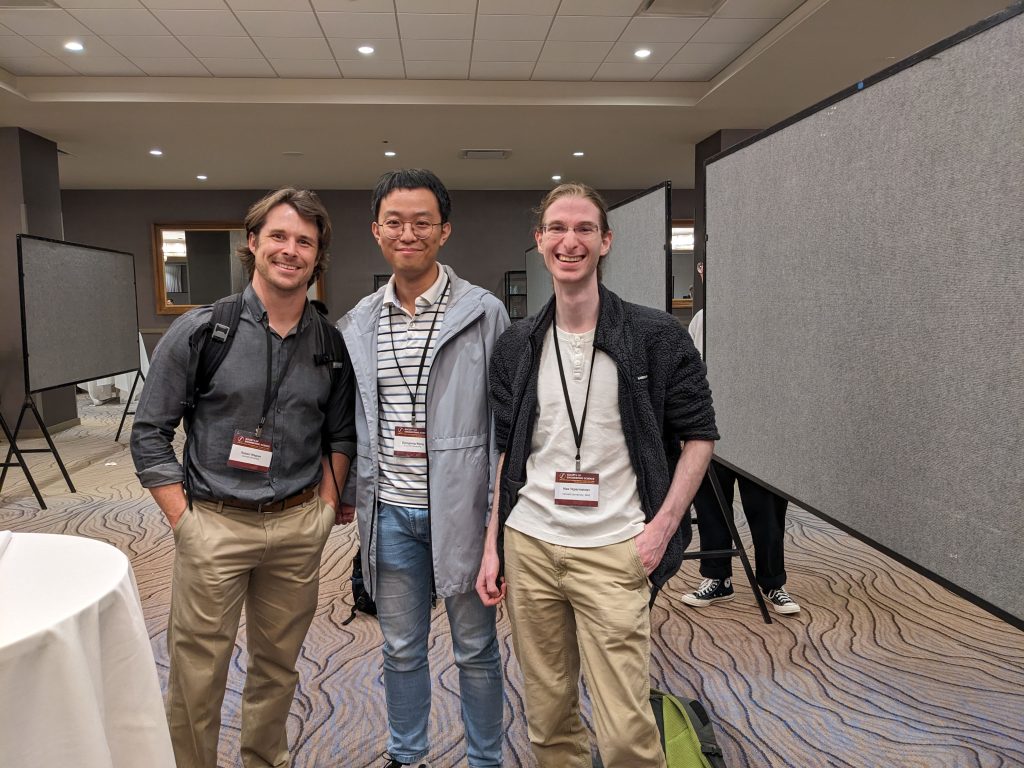

Congratulations to Dr. Steven Yang! He successfully defended his PhD thesis “THE INFLUENCE OF MOLECULAR-SCALE INTERACTIONS ON MACROSCOPIC MECHANICAL PROPERTIES IN POLYMERIC MATERIALS” one week ago. His PhD work impressively spanned synthesis, experiments, molecular dynamics simulations, and continuum constitutive modeling.
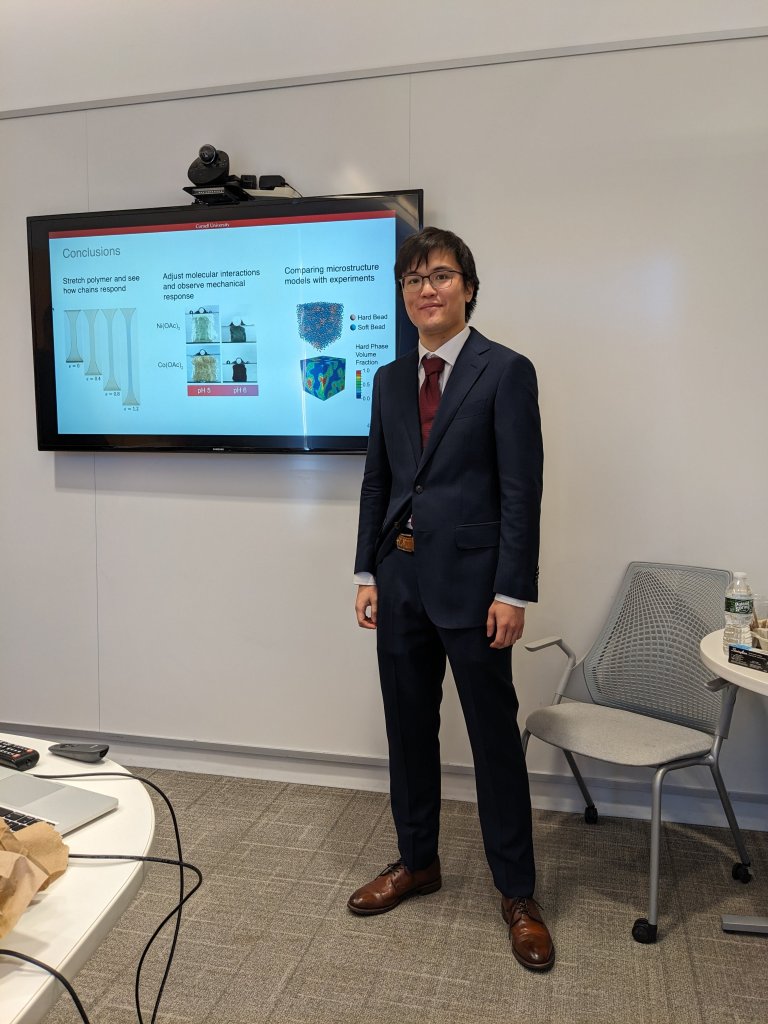
PhD Candidate Hongyi Cai and Prof Silberstein participated in the Fall ACS meeting in San Francisco earlier this month. Hongyi focused on his polyelectrolyte synthesis and characterization. Prof Silberstein participated in the “Polymer Mechanochemistry Symposium” and the “Polymeric Materials: From Synthesis to Application: USA-Israel Joint Symposium”, and snuck out after her talk on modeling mechanochemically responsive elastomer networks to catch Hongyi’s great presentation and take this picture that doesn’t do it justice.
